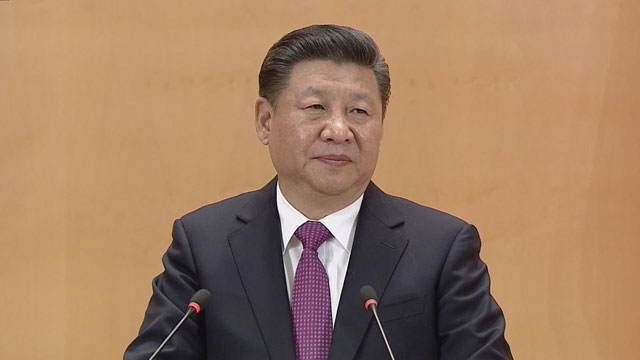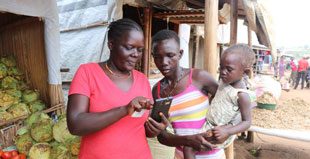
It has the opportunity, tools, and experience to lift thousands out of extreme poverty globally
COMMENT | ASIT K. BISWAS , KRIS HARTLEY | In September, the Bill & Melinda Gates Foundation released a status report tracking progress on the United Nations Sustainable Development Goals (SDGs). The data, which were meant to highlight efforts to eradicate extreme poverty and reduce premature deaths, was also intended to cajole. Countries can, and must, do more to address the global development challenges that the planet collectively faces, the report concluded.
No country was singled out in the Gates report for its potential to restore the “world’s commitment to development.” Rather, “leaders everywhere” bear responsibility for ensuring that the SDGs are met by 2030. But we believe there is one country that can do more than others to build the world envisaged by the SDGs: China.
Two years into the SDG program, international development is at a crossroads. The United States, long the torchbearer of foreign aid, is retreating; so is Europe (albeit to a lesser extent). But China, with its newly articulated global ambitions, has an opportunity to reinvigorate the conception and delivery of humanitarian assistance.
Adopted by the UN General Assembly in 2015, the SDGs outline a vision for global development that targets poverty, education, public health, inequality, sustainability, and climate action over the next 15 years. It presents a broad vision for development, whereby issues once viewed as country-specific are treated as challenges for the entire world to tackle collectively. By contrast, the Millennium Development Goals, which ended in 2015, were more narrowly focused, and primarily targeted at issues affecting poor countries.
But the Gates’ study suggests that some of the SDG targets are already in jeopardy. For example, the health goal (SDG 3), which includes a target for eliminating preventable deaths among newborns and children, is unlikely to be achieved in the allotted timeframe. At the current pace, mortality reduction in South Asia and Africa will not be realised until mid-century.
Clearly, more investment is needed globally in the types of interventions that have proven effective locally. Ethiopia’s Health Extension Worker program and Malawi’s Health Surveillance Assistant program have been proven to reduce child mortality. Aid dollars should be earmarked to help programs like these expand to other regions.
Instead, the opposite is happening. The growing isolationism associated with the populist backlash around the world is having severe consequences for foreign assistance. According to the OECD, bilateral aid to the world’s least-developed countries fell by nearly 4% in 2016. This is an alarming drop for these countries, given that official development assistance (ODA) accounts for more than two thirds of the aid they receive.
The U.S, which remains the world’s largest donor for nutrition programs and for maternal and child health initiatives, is leading the funding retreat. President Donald Trump’s 2017 budget proposal includes a staggering 45% cut to funding by the US Agency for International Development for water and sanitation projects, a 26% cut to global health funding, and the elimination of funds for family planning. While it is not clear whether Congress will support Trump’s budget request, which would amount to billions of dollars in lost aid, even a minor reduction in U.S. aid spending would hurt many of the world’s poorest.
The U.S. is not alone in its foreign aid retrenchment. The European Union’s 2018 draft budget proposes a €90 million ($106 million) cut to development spending, while Austria, Germany, and Italy have all diverted development assistance budgets towards migration crises viewed as imminent national security threats. These are troubling trends, because private philanthropy cannot replace aid withdrawn by governments.
The world needs a new champion for international development, and China should assume the role. With weakening ODA commitments from traditional donors, China has a chance to lead in human development, poverty alleviation, and public health spending.
It is true that China’s aid model differs from the West’s. Europe and the US have historically focused on funding health care and education initiatives, while encouraging civil-society growth and participation. China, on the other hand, grants aid on a bilateral basis, and has typically targeted its funding toward infrastructure projects. But Chinese leaders have also recently shown interest in aid to strengthen civil society and improve livelihoods.
Although Chinese ODA is still a fraction of what OECD countries spend, China has signaled its interest in becoming a development leader, especially in the health sector. At the 2015 UN Sustainable Development Summit in New York, China pledged $2 billion to help implement the SDG agenda, and China’s flagship “Belt and Road Initiative” includes health cooperation as part of its proposed strategy. In 2014, China also committed $47 million to help contain the Ebola outbreak in West Africa. While that was significantly lower than the U.S. pledge of $1.8 billion, China was among the fastest to deliver on its commitment.
China’s geopolitical and economic influence is growing, and so, too, must its role in promoting international peace and development. Skepticism about China’s development intentions will no doubt emerge, given China’s political and ideological differences with the West. But the skepticism could yield positive results, especially if it prompts Western powers to reevaluate their foreign aid retreat.
Even if it does not, China has the tools to become a leader in international development. And, having lifted some 470 million of its own citizens out of extreme poverty between 1990 and 2005, it also has the experience. But, more than anything, China now has the political opportunity. As the US and Europe turn inward, ensuring the SDGs’ success will increasingly depend on encouraging – and becoming accustomed to – Chinese leadership.
Asit K. Biswas is a visiting professor at the Lee Kuan Yew School of Public Policy, National University of Singapore. Kris Hartley is a lecturer in public policy at the University of Melbourne and a non-resident fellow at the Chicago Council on Global Affairs.
Copyright: Project Syndicate, 2017.
www.project-syndicate.org
 The Independent Uganda: You get the Truth we Pay the Price
The Independent Uganda: You get the Truth we Pay the Price



